On a wall in the Savitsky Museum of Art in Nukus, NW Uzbekistan, hangs a modest landscape painting from 1976 depicting the Moynaq fish canning factory. The factory itself is a relatively unobtrusive part of the scene and probably served more as a means of keeping the authorities from shipping the artist off to the gulag for the crime of rejecting the absurd values of Soviet Realism, as had happened to others. Art could not function as a means of simply expressing natural beauty, it had to support the rigid state dogma. The factory stands at the foot of a gently pastured slope, in the background a handful of fishing boats gracefully ply the perfect, blue, inland waters of the Aral Sea. This simple painting captures the reassuring idyll of lakeside life.
Two days later under the drizzle laden skies of spring I stood on the same spot as the artist, hands deep in pockets out of the chill wind. At my feet were the only remaining evidence of the pastoral foreground in the painting: dollops of cow shit, now sitting amongst the clouded plastic of discarded bottles, jagged shards of rusted steel and crumbling rubble. The factory, now an empty, gloomy shell sits forlornly, corroded dusty machinery lurking in the shadows behind empty windows and half-hearted attempts at boarding up openings.
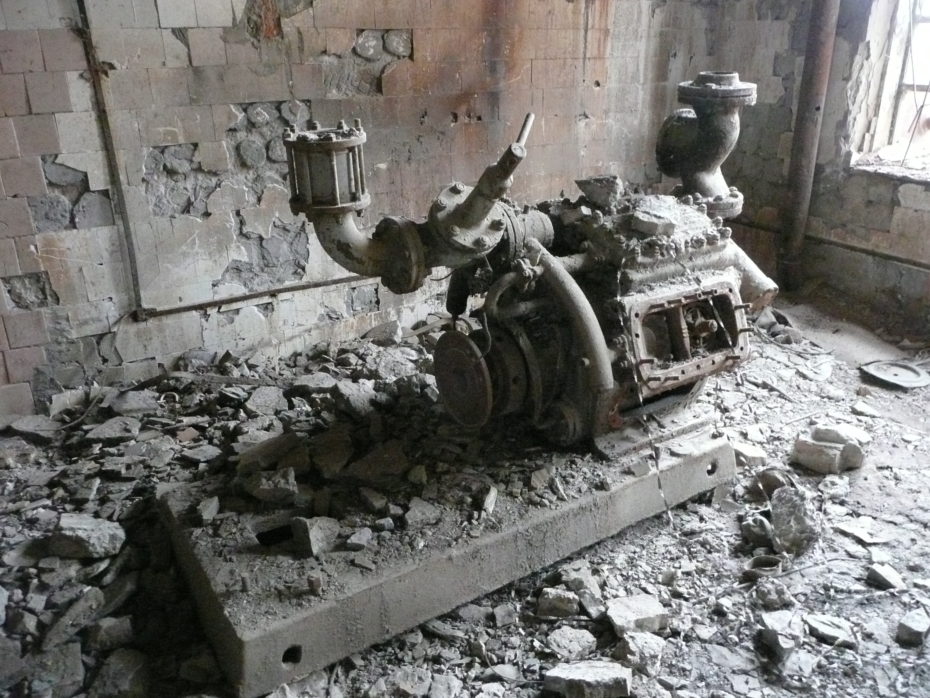
After anything of any value ia salvaged the few remaining bits of machinery sit awaiting strange foreign tourists with a love of industrial decay
As for the fishing boats there’s no water on which to float, only a dirty grey expanse of silt stretching as far as the eye can see. You would now have to drive for several hours north, in the direction of the Kazakh shore, over what was once the world’s fourth largest lake, to find enough water to float a fishing boat in, a largely pointless task in the polluted, saline waters. Rusting hulks of the former fleet are kept nearby as a photo-op for the few tourists who bother with the dead-end, three-hour bus journey from Nukus to reach this sad shore. The knowledge that most of the boats were dragged to one point to make it easier for foreigners wielding cameras only adds to the pall of dismal loss that envelopes this barren peninsular where only wiry sage brush grows.
The town itself shares the atmosphere of grim neglect: shoddy, muddy houses fenced with scrap metal and waste wood. School children can raise a giggle at the sight of a tourist but there are few signs of activity and the mostly aged inhabitants trudge about their chores with a dull resignation. Anyone who had somewhere else to go left a long time ago.
If we need yet another poignant reminder of man’s arrogant abuse of nature’s resources it is surely here in Moynaq, as it is not just nature that has suffered, it is people and here it is hard to imagine anything but a depressing, gradual decline to the day when the relatives of the last, obstinate pensioner will have to return to bury the body amongst the others in the desolate graveyard.
So, what happened? Responsibility for the environmental disaster can be traced back to the USSR deciding to boost the already thirsty cotton production in the region using leaky irrigation canals – much of the area is a desert and sand is not known for its impermeability, but subsequent governments have been too busy lining their pockets to solve the issue.
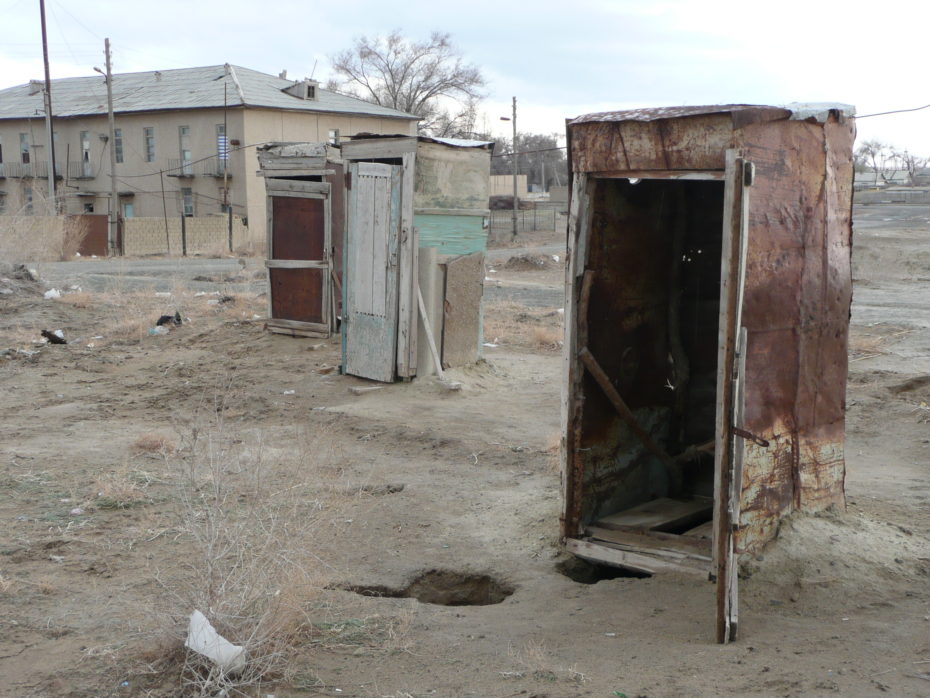
If only we could all possess outside loos of this standard in Moynaq- known for being 50m too far in winter and 50m too close in summer
Elsewhere in the region you will often see what looks like a heavy coating of frost on the ground but is actually salt blown from the lake bed, sometimes arriving by means of salt-sand dust storms. Even the climate has radically altered, aggravating the already testing extremes of minus 30C winters and 50C summers. Along with the wealth of pesticide residue left by intensive cotton production the situation has had a devastating effect on the population’s health, to add to the social misery of unemployment. Just to add icing to the cake the Russians had used an island in the lake for biological warfare testing, it has sat high and dry for years bequeathing its toxic bounty to the world around.
Any hope that much has been learnt from this mess was dispelled at an exhibition of the President’s great endeavours in the History Museum of the People of Uzbekistan in the capital Tashkent, where he is seen praising a joint venture in tractor production with the US, sitting in a nice shiny new machine to be used for the cotton crop.




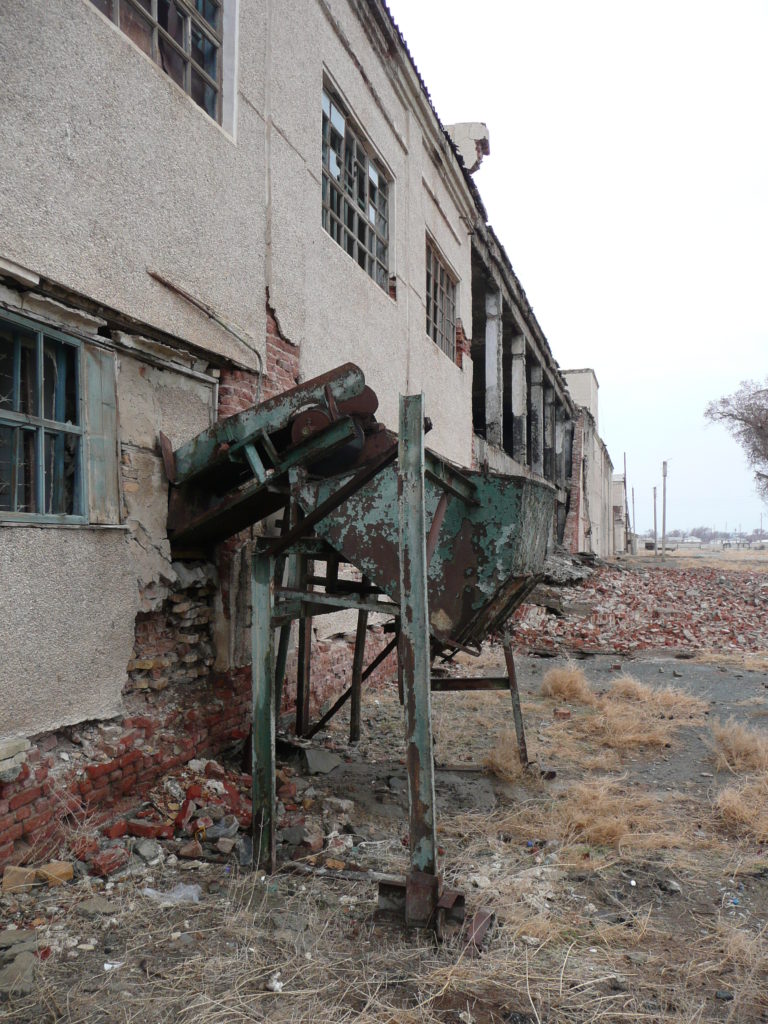

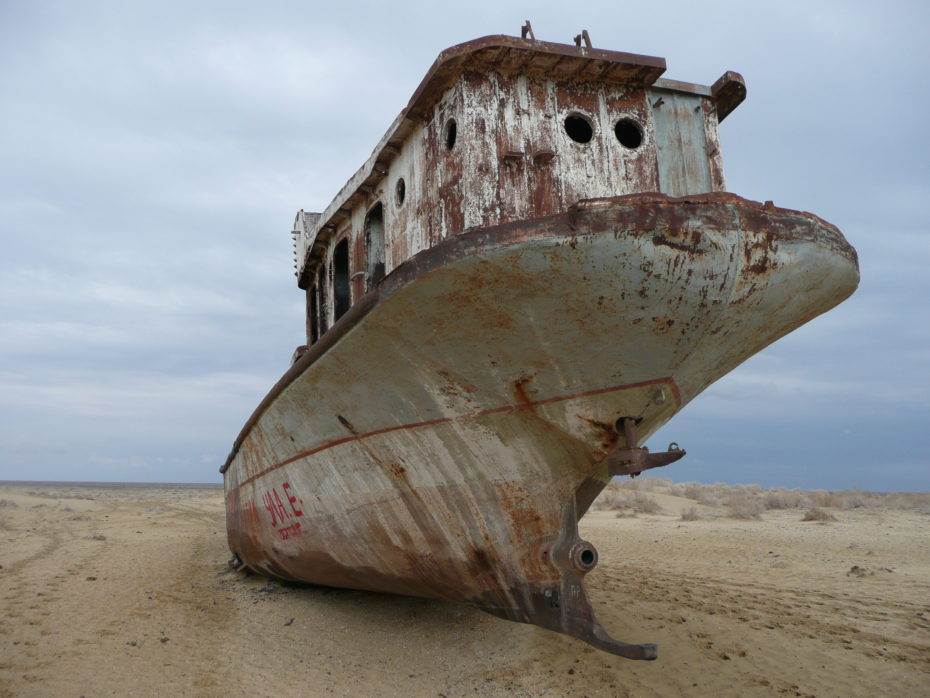
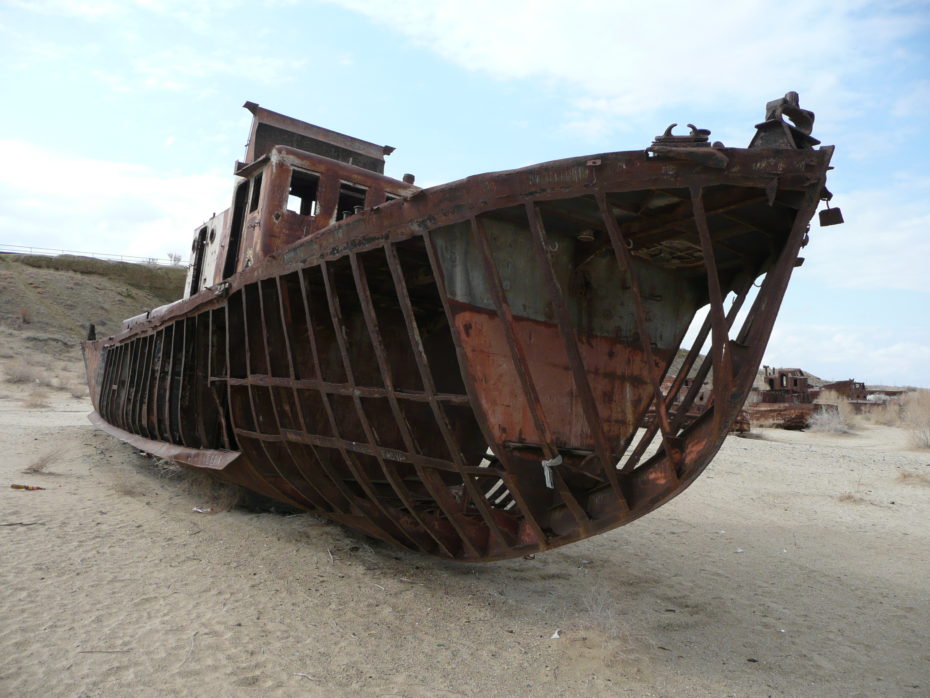
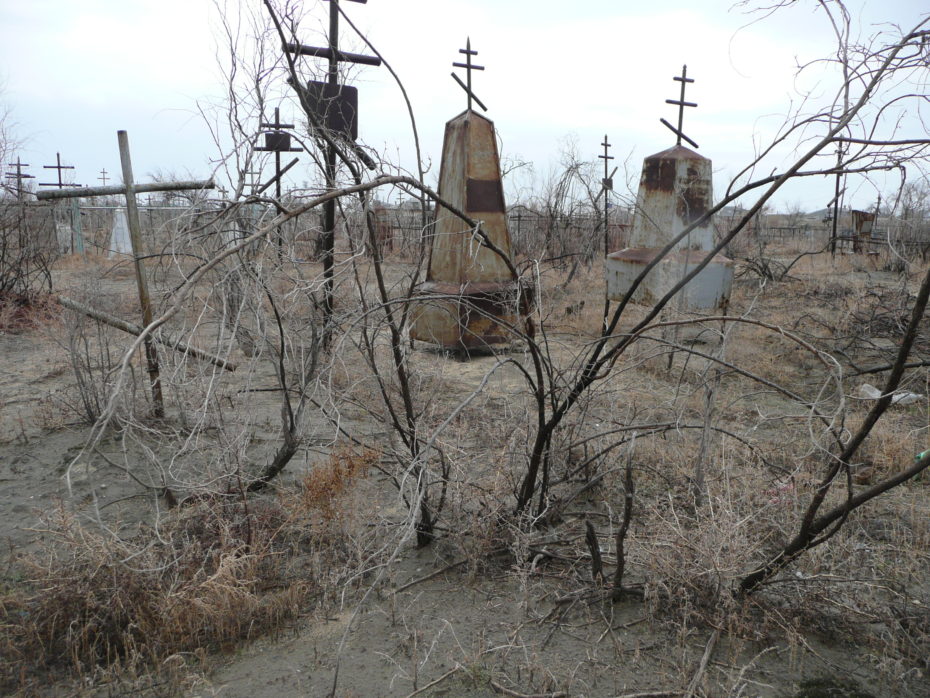

On a cold wintry evening that was not very cheerful!!Fantastic photos .Go somewhere more welcoming Happy Easter xxx Jane